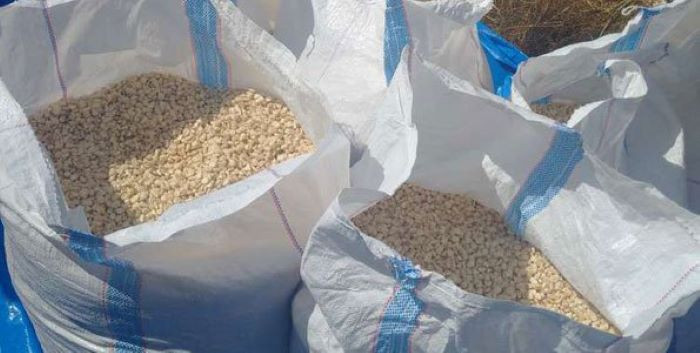
Yesterday, Finance minister Patrick Chinamasa presented the 2015 National Budget statement. Most Zimbabweans looked forward to this time of the year for various reasons and expectations from this occurrence. But for Tichaona Ndaiziveyi and other dangerous drug users in the country does this event mean anything to them?
Wilson Box
Zimbabwe is witnessing an increase in problematic drug use among its domestic population along with the related public health issues that accompany certain types of drug use. The drugs that are most commonly used in Zimbabwe include cannabis, heroin, glue and cough mixtures such as Broncleer (bronco) in street lingo. Cannabis (mbanje) remains the most popular drug mainly because it is illegally grown locally or smuggled in from neighbouring countries like Malawi and Mozambique. In some societies along the Zambezi, mbanje is grown and consumed in large quantities as a way of life and therefore the drug finds its way into other parts of the country.
Other dangerous drugs also come through Zimbabwe on their way to other countries in the region such as South Africa. Zimbabweans are often used to transport these drugs and rather than being paid in cash, are usually paid in drugs which then enter the local market.
“When you become a transit country, you are immediately also a consumption country,” Gilberto Gerro of the United Nations Office on Drugs and Crime (UNODC) once concluded.
Young people in Zimbabwe have been identified as the most vulnerable section of the population, especially those from poor or unstable backgrounds who may be tempted to see drugs as an escape route from life’s troubles.
According to Rudatsikiri et al’s 2009 study of cannabis and glue use among school pupils (largely aged between 13 and 15) in Harare, it was found that overall 9,1% of pupils had used the drugs (13,4% of males and 4,9% of females). Use of cannabis and glue is commonly associated with cigarette smoking, alcohol use and sexual activity as well as a lack of parental supervision.
In order to make drug intervention programmes more relevant to the local situation, they should be designed to target risk factors within these domains. However, reducing discrimination and violence, and trying to facilitate positive parent-child relationships through social policy may also be worthy targets of intervention which could result in a decrease in adolescent drug misuse.
- Chamisa under fire over US$120K donation
- Mavhunga puts DeMbare into Chibuku quarterfinals
- Pension funds bet on Cabora Bassa oilfields
- Councils defy govt fire tender directive
Keep Reading
The study also concluded that illicit drug use among adolescents is associated with poor academic performance, violence and unsafe sexual behaviour as well as increased risks of sexually transmitted infections including HIV and Aids. Unsafe sexual practices are a real problem in Zimbabwe where, according to UNAids, almost 15% of the population is HIV positive and access to antiretrovirals (ARVs) is limited by price inflation and corruption.
According to a research carried out by the Health Professionals Empowerment Trust in Zimbabwe, 50% of admissions to mental institutions have been attributed to substance-induced disorders. The research went on to single out youths as the most affected group of individuals in the country.
In Zimbabwe over 80% of people admitted to mental institutions due to substance misuse disorders are aged between 16 and 40, and most of these are male.
According to Dr Masitara in another research done locally, 60% of the youth in Zimbabwe are hooked on dangerous drugs. Recently, a young man drowned and died in a swimming pool in Highlands after taking, as it is widely believed, too many a drug at a pool party.
On a separate occasion, a parent from Chitungwiza, called our offices recently complaining that his teenage son was behaving strangely. At times the son came home drunk and becomes violent when asked about his behaviour. These complains by parents are now common occurrences in many households in Zimbabwe today. Presenting a motion in Parliament recently, Hon Tapiwa Matangaidze lamented the behaviour of the youth which is being influenced by the taking of alcohol and other dangerous substances.
At Midlands State University in Gweru, a new drug nyaope which is a mixture of marijuana, rat poison, antiretroviral medication and at times heroin has hit the institution by storm. According to reports, the drug is peddled from both internal and outside gangs. This is a cocktail for disaster in Zimbabwe. This has led to moral corruption and academic decline at the University according to reports. Some of the peddled drugs include the blue pill, nintendo, ecstasy and broncleer.
It is under this scenario that substance abuse is a dangerous threat to the development of Zimbabwe. In a recent interview, Dorcas Sithole, the deputy director for mental health in the Ministry of Health asserted that, “We have a problem of drug abuse as a country,” Sithole said, attributing the problem to the fact that government did not have enough rehabilitation facilities, an unfortunate situation which resulted in patients being vulnerable to repeat addiction.
In a research carried out by the Zimbabwe Civil Liberties and Drug Network, it was found out that the country does not have rehabilitation centres for the treatment of people who use drugs. Most cases of drug use are referred to Parirenyatwa Group of Hospitals Annex Department and the most severe cases of drug use are confined to Chikurubi Maximum Prison.
These two institutions do not have the necessary expertise to deal with the situation. They are just temporal centres’ for detoxification and curbing the scourge. With the rampant use of dangerous drugs amongst the youth and the key populations in Zimbabwe, how then can the problem be solved?
The Dangerous Drugs Act (Chapter 15) in conjunction with the Criminal and Codification Act has not kept up-to-date with the current thinking on how to tackle drug-related issues. The two pieces of legislation are not rehabilitative but rather penal. This has somehow contributed to the increase in the use of dangerous drugs in Zimbabwe. Most people do not come out in the open that they have a drug problem because of the legislation which is harsh.
In a week’s time, Chinamasa will be presenting his budget statement.
The people who use drugs like Tichaona and several parents will be looking forward to that statement. The Ministry of health’s mental department to which issues to do with drug use are confined, will also be looking forward to an increase in their budget from last year’s $500 000 allocation to a substantial figure to enable it to have better treatment facilities for people with mental challenges, key populations and ordinary people who use drugs.
As a way forward, Zimbabwe although having the two pieces of legislation that deal with drug use, should consider having a holistic drug policy that is evidence based, grounded in science, public health and human rights.
The current laws do not adequately address issues surrounding drug use/misuse — particularly prevention and treatment. Furthermore, decent data is lacking. The statistics available often come from small research projects and newspaper articles that do not present a full picture of the nature and extent of the issues at stake.
lWilson Box is projects executive director at Zimbabwe Civil Liberties and Drug Network can be contacted at [email protected]











